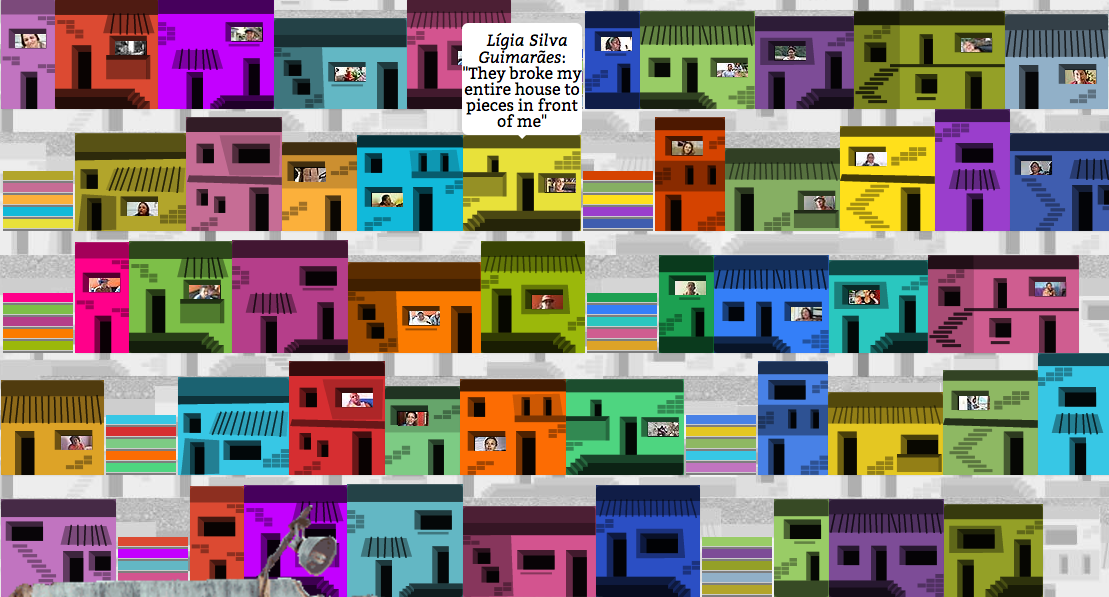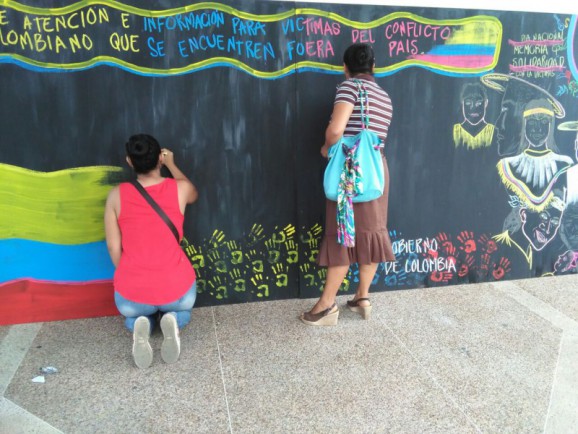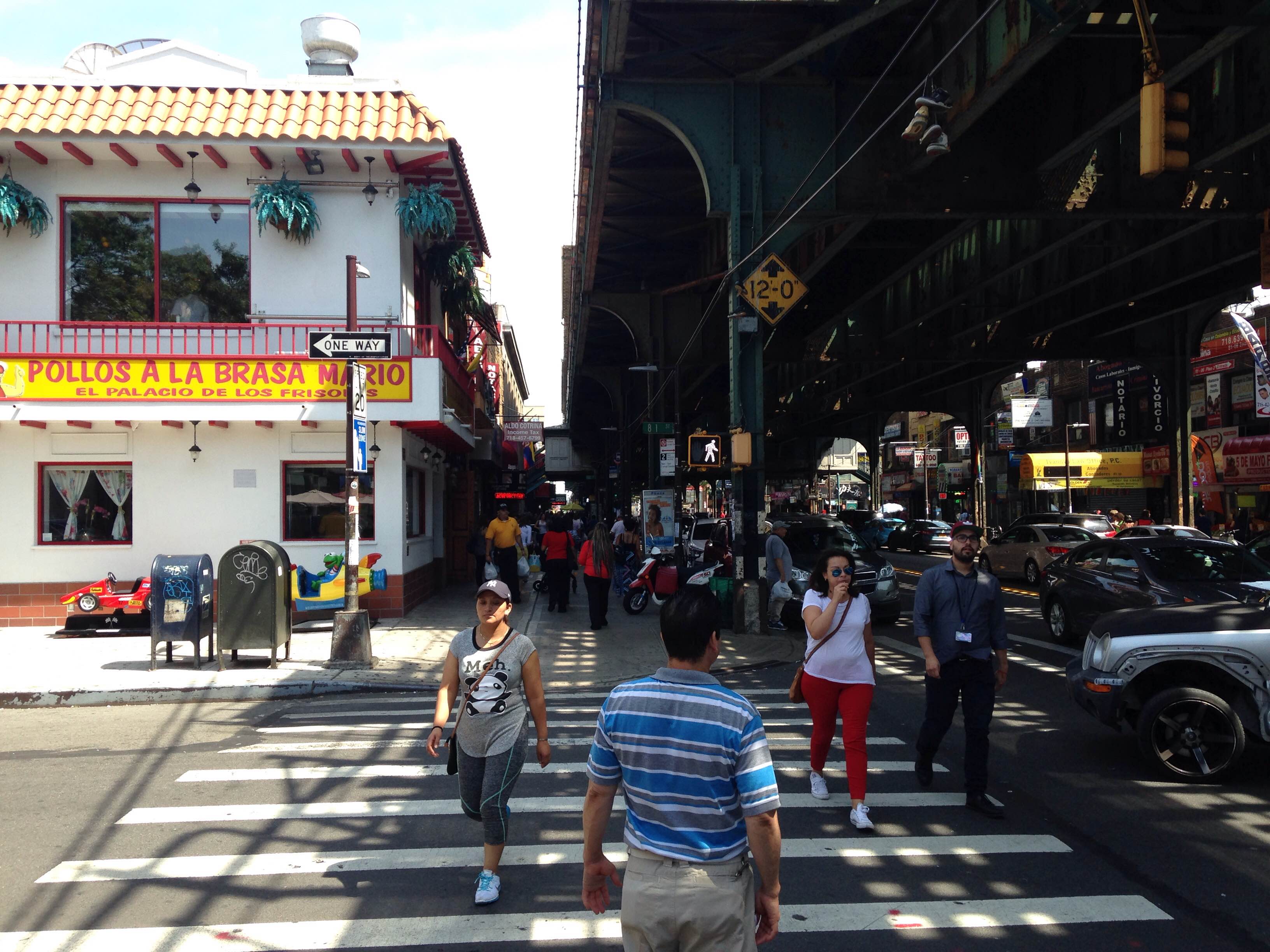
Brazil, News Briefs, North America
In the Olympics’ Wake, Creating a Digital Memory of Rio’s Evictions
August 21, 2016 By Camila Osorio
Last week, Brazilian journalist Natalia Viana went through one of her longest commutes in Rio de Janeiro. She started in the eastern neighborhood of Botafogo, where she directs the investigative website A Publica. She took a train that would transport her to Campo Grande station in western Rio de Janeiro, two hours away. Once at the station, she had to catch an hourly bus to a public housing project. Her goal was to interview 42-year-old Maria Elisandra do Nascimento, a mother of four.
“When I gave birth I had to walk all the way to the highway full of pain,” Nascimento said, remembering the day she delivered her last child. There was no public transportion in Campo Grande that could quickly take her to a nearby hospital, so she endured hours before finding a doctor. The reason Viana was listening to Nascimento that day was to find out how this inconvenience could have been avoided in the first place. In order to allow for the construction of the rapid transit system BRT Transoeste for the Olympic Games, the city evicted Nascimento from her old place in Vila Recreio, in close proximity to Rio’s hospitals.
“I loved it, I loved it a lot, I love Recreio,” she said. “But what can we do? They moved us here.”
Viana, 36, leads a small team of reporters and college students who have been mapping the way Rio’s Olympics infrastructure has evicted large communities around the city. Officials say
22,000 residents have been evicted and resettled from their homes since 2009 when the Olympics were announced.
Not all of those people lived in areas of Olympic interest, Viana told me over the phone. “[The city] says the vast majority were removed because they were living in dangerous areas. But that is hard to prove or disprove. They never revealed the number of people removed solely for the Olympics,” she said. The city only accounted for 2000 people who, it claimed, were removed for the installment of infrastructure that was designed ostensibly for a “collective benefit.”
Viana and her colleagues embarked on the project to collect the memories of 100 of the resettled citizens, which wasn’t always safe. Groups of armed men threatened two of her reporters in the new public housing site Juliano Moreira, in Rio’s Jacarepaguá neighborhood. “They said they didn’t have the right to be reporting,” Viana said. Many of the new public housing developments are located in violent areas in the western part of Rio. “The west zones are dominated by private security groups that extort the people: they demand a fee for the light, electricity and water. This is all completely illegal,” she added.
According to Viana, some evicted residents secured comfortable new public housing or reasonable compensations for their homes. However, others were forced into exorbitant debt, reaching the amount of $23,000.
The product of this grassroots reporting is “100”, a curated website featuring each of the eviction stories. The site’s intro begins with a video of a real demolition in Vila Autódromo, a former favela where the Barra Olympic Park is now located. Yellow cranes are seen crushing the sides of a two-story concrete building. Walking among the debris, a man with a blue shirt tries to enter what is left of his home. Such isolation was the city’s way of pressuring those who refuse to resettle. “The community would become a war zone, you would have rats coming, mosquitoes, Zika or Dengue,” Viana said.
After this frightening video, digital visitors may take a virtual tour around the Rio that no longer exists. To reconstruct living memories, the site offers cartoon representations of 100 virtual houses, each one with a different bright color.
Enter, for example, the pink pastel house of Jane Nascimiento (no relation to Maria). You will find photos of her, accompanied by an audio recording of her voice. A former resident at Vila Autódromo and a 59-year-old artist, Jane says, “no one wanted to leave, no one, no one, no one.” She now lives in a public housing unit with no space to work. In one of the photos, Nascimiento is staring at graffiti painted on the remains of a concrete wall. It reads: “THIS AREA IS OF SOCIAL INTEREST! THERE IS NO ROOM FOR EXPROPRIATION.”
“There are very emotional conversations around Rio’s walls,” said Olga Lucía Lozano, a Colombian journalist and the creative director who built the digital design for “100.” Lozano wanted web citizens to interact with this digital Rio the same way they do in real life. So she designed a web wall for them to write what they can’t say with spray paint.
Viana remembered that security officers expelled protesters inside Rio’s first Olympic football match for carrying t-shirts saying “Out with Temer,” referring to Michel Temer, Brazil’s interim president after Congress impeached the former head of state, Dilma Rousseff. In “Pincha Parede” the wall for digital graffiti, online “residents” wrote, “Volta Dilma!” (Come back Dilma!), and Fora Temer! (Out Temer!).
Lozano explained that the idea behind “100” is to make people see that “territory is inseparable from our emotions.” Attachments like those that Heloisa Helena Costa describes, while she witnessed dity officials destroy her house:
“I didn’t shed a single tear, and until now I don’t know how I didn’t, because I am a crier. I didn’t shed a tear. The whole time, I held my head up high and even inspected their work to see if they were knocking it down correctly. And that was what they couldn’t swallow, they had this face… because they didn’t expect me to have that reaction.”
Costa is a 55-year old Afro-Brazilian woman and, upon entering her royal blue digital house, one can meet her in a public housing project of the Cidade de Deus favela. She tells visitors that she remembers listening to Tom Jobin’s Sabia song in her head in the days before her eviction. The tune is available to web listeners inside her virtual home, and the lyrics go, “I will come back, I know I will come back, to my place.”
This is not the only musical memory associated with Rio’s lost homes. Marcio Enrique de Jesus Morza, a 36-year-old man, says his house “wasn’t a palace, but it was comfortable.” It had a living room, a bedroom and a bathroom that he built himself, out of bricks. He now lives in an apartment in Estrada dos Bandeirantes, Jacarepaguá. Morza says the Olympics are a “huge white elephant, just like the World Cup, for us workers. Us rare mortals who get up at 5 AM to go to work to pay yet another bill.”
When asked what music he used to listen when he learned he was being evicted, he chose Michael Jackson’s “They don´t really care about us.”
For national and international sports fans and athletes, the Olympics were a reason to celebrate Rio. But for Rio’s evicted, this is a moment to question how much the city’s residents will remain forgotten after the Olympics. For some of them, at least, their musical and visual memories are digitally kept in “100.”
About Camila Osorio
Camila is a Colombian reporter based in New York City. She has published her work in The New Republic, WNYC, PRI, the Colombian website La Silla Vacía, among others. She is currently checking facts at The New Yorker.





